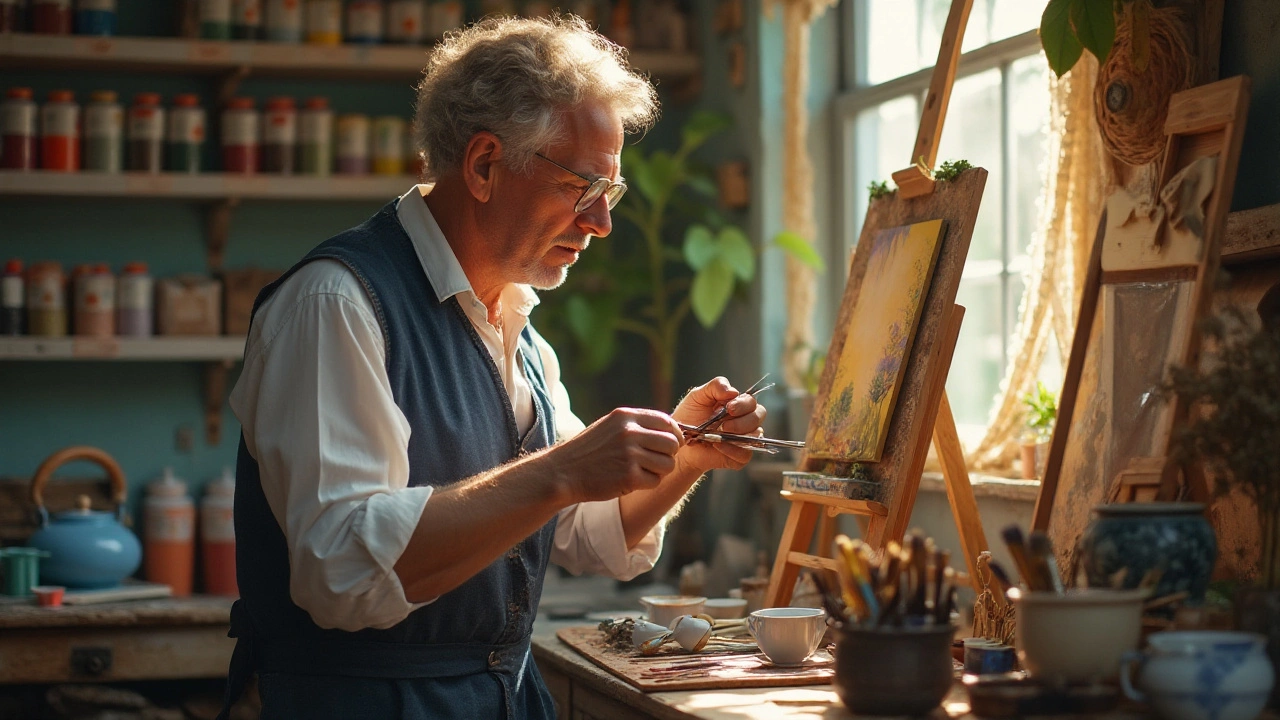Creative Process: Simple Steps to Boost Your Art
Ever feel stuck staring at a blank canvas or lump of clay? The trick isn’t magic – it’s a steady process. Break the work into tiny actions, and you’ll see progress fast. Below are real‑world steps you can start using right now.
Planning and Sketching
Start with a quick thumbnail sketch. Grab a pencil, a scrap of paper, and draw the main shapes in a minute or two. This gives you a roadmap without committing to details. If you work in watercolour, sketching first helps you see where light and shadow will land, so you can plan washes before you add colour.
For portrait painters, focusing on the eyes early on makes a huge difference. A simple line‑up of the eye line, nose, and mouth creates a solid foundation. From there you can adjust proportions without erasing large areas of paint.
Working with Mediums
Each medium has its own timing. Oil paint stays wet longer, so you can blend colours on the canvas for days. When you mess up a wet oil layer, you can gently wipe with a soft cloth or scrape with a palette knife. If the paint is tacky, a thin glaze can cover mistakes without ruining the texture.
Watercolour dries fast, so work from light to dark. Lay down a wash, let it dry, then add deeper tones. If you notice a blotch, lift it with a clean damp brush before it fully sets. Sketching before you paint helps you place those washes more accurately.
Sculpture doesn’t need paint, but it does need a plan. Use cheap materials like newspaper or plaster to prototype the shape. Once you’re happy, move to your final material—clay, wood, or even recycled objects. Keeping the prototype small saves time and money.
Abstract art often feels intimidating because there’s no “right” outcome. Treat it like a visual journal. Start with a colour or texture that grabs you, then build layers. If a colour clashes, add a neutral glaze on top; the original tone will still peek through, creating depth.
When you hit a roadblock, step away for five minutes. A short break resets your eyes and brain, letting you see the work anew. Many artists find that a quick walk or a cup of tea brings fresh ideas.
Finally, document your process. Snap a photo after each major step. Not only does this help you track what works, it gives you material for portfolios and social media. Seeing the evolution from sketch to finished piece can be surprisingly motivating.
Remember, a solid creative process is just a series of small, repeatable actions. Start with a sketch, respect the drying times of your medium, and keep experimenting. Your next artwork will feel less like a gamble and more like a well‑planned adventure.

12 May 2025
Thinking about making your own digital art but not sure how to start? This guide cuts through the confusion and gives you straightforward steps, useful tips, and honest advice. You'll find out what tools you actually need, how to pick the best programs for your style, and ways to skip that dreaded creative block. It's all about getting you set up and having fun while you learn. No experience needed—just some curiosity and a little patience.
Continue reading...

16 Oct 2024
The 3 P's of painting—Preparation, Patience, and Precision—are essential elements for artists looking to master the art of oil painting. This article delves into each of these foundational aspects, providing insightful tips and interesting facts that can aid both beginners and seasoned artists alike. Learn about the significance of a well-prepared canvas, the virtue of patience in layering colors, and the importance of precision in brushstroke techniques. Understand how embracing these principles can transform your approach to oil painting.
Continue reading...

